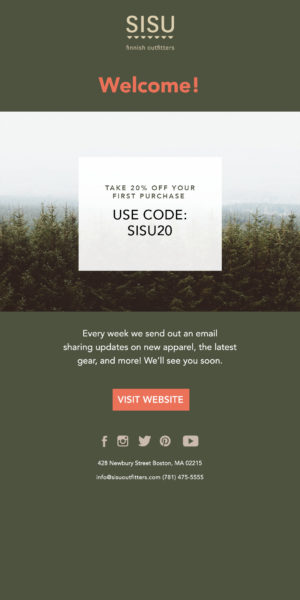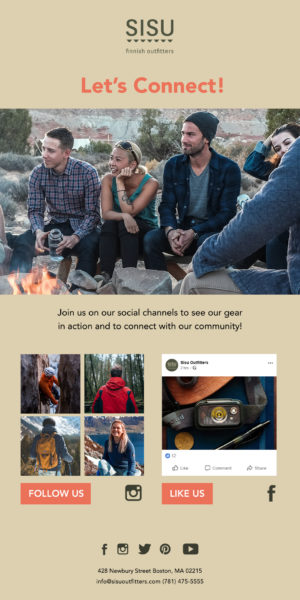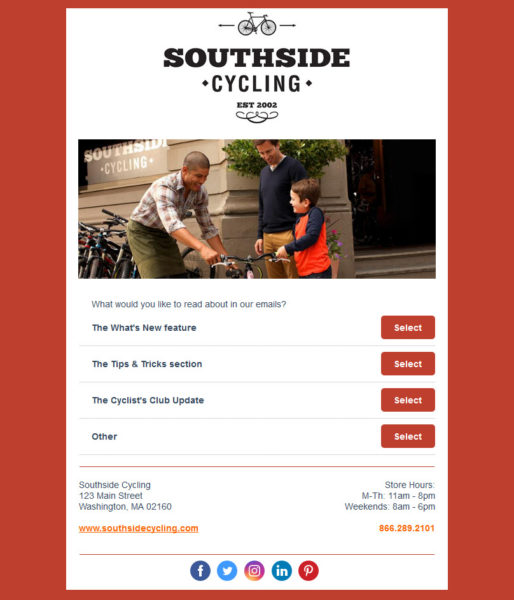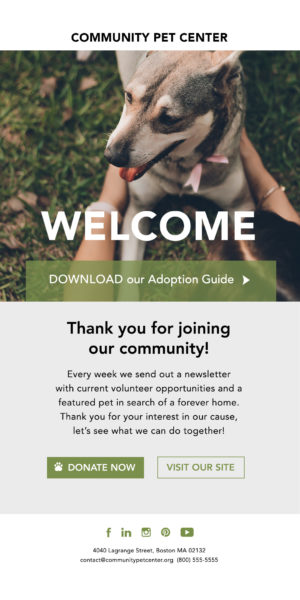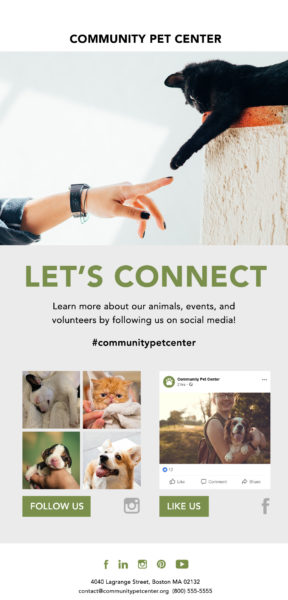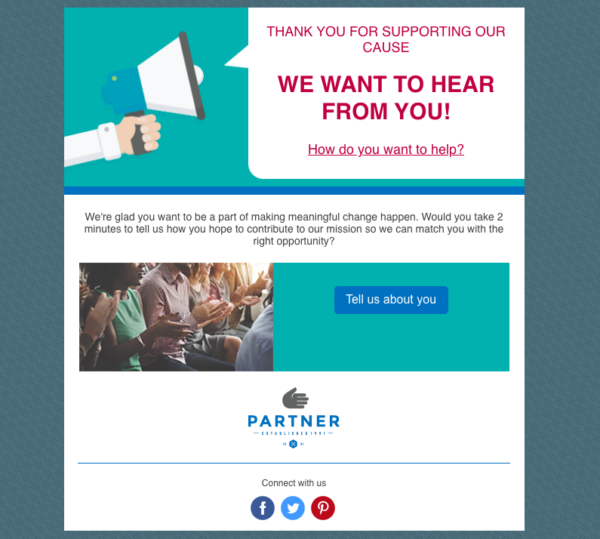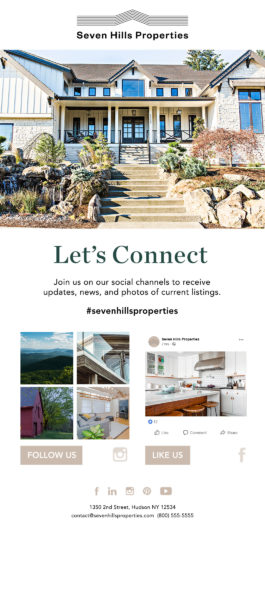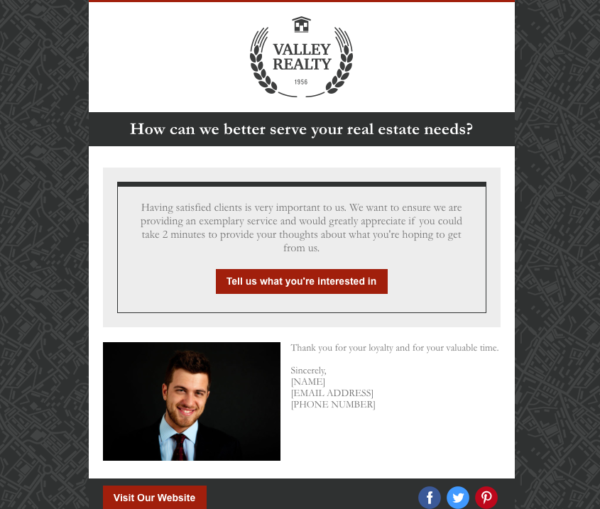
You probably already know that first impressions are key when it comes to growing your business. But beyond the first impression, you also need to stay top of mind with new contacts, especially as you’re first building your relationship with them.
So how do you make a strong first impression and stay top-of-mind in the crucial days after a contact first signs up for your email list? With an automated welcome email series.
An email welcome series is an essential part of any email marketing strategy. The moment when a new contact signs up for your email list is so important because they are expressing that they want to hear from you. You don’t want to squander that moment — or your relationship with this new contact — by neglecting to reach out to them.
If your new contacts have to wait for your next regularly scheduled email newsletter, it’s possible that you lose the momentum started when someone makes the decision to join your email contact list.
Think of it this way — If a potential customer was calling your business on the phone to express interest, you’d answer the phone right away and try to make a great first impression, right? You wouldn’t wait to call them back at a later date, perhaps after they no longer have a need for your products or services. So make sure you’re doing the same with your emails — connect with your new customer leads when they want to hear from you.
In this article, I’ll show you why a welcome email series is so important, what to include in your welcome series emails and some examples that you can use to build your own automated welcome email series.
- What is an automated welcome email series?
- Why you need to set up an automated welcome email series
- How many emails should be in a welcome series?
- What to include in your automated welcome series
- Welcome series email examples by industry
- An automated welcome series that feels personal is what you want.
What is an automated welcome email series?
An automated welcome series is a series of emails that are triggered to send automatically when someone subscribes to your email list for the first time.
Why you need to set up an automated welcome email series
An automated welcome email series allows you to set the stage for your new contact while increasing engagement and sales at the same time.
The best part is that you set up your welcome series once, and it works for you indefinitely. The experience is the same for your first email contact or your thousandth.
Why does a welcome email series need to be automated?
Automating your welcome email series is all about timing. Email marketing automation is so effective because it allows you to reach clients at a time that’s right for them. If you are sending your welcome emails manually, their timing will be based on what works for you, not your new contact.
You want your new email subscribers to hear from you as soon as they sign up for your list. At that moment, you’re top of mind for them, and they’re expecting to hear from you. It’s also reassuring to immediately receive that first email as confirmation that they successfully subscribed.
How many emails should be in a welcome series?
We recommend that your welcome email series have at least two emails: An initial welcome email and an invitation to connect further.
If you’re feeling ambitious and want to learn more about who your new subscribers are, you can add a third email to your welcome series to get to know your contacts better.
Read on for more details about what each of these emails includes and why they’re important.
Shouldn’t one welcome email be enough?
I know what you’re thinking: Why do I need to send more than a welcome email?
The problem with only sending a single welcome email is that most people tend to overstuff it with information. The more you try to add to a single message, the less effective your email becomes, simply because you’re trying to do more all at once.
You also miss the opportunity to get your business in front of your contact multiple times at a point when they’re highly engaged.
A short series of emails designed to increase engagement and sales with your new contacts works best.
What to include in your automated welcome series
Plan on sending your automated welcome emails to all of your new email contacts. First, we’ll go over each of these three welcome emails to show you their purpose and what to include. Next, we’ll show you some examples of how these emails might look once they’re all set up and sent out.
1. The first welcome email
The first welcome email is crucial. Imagine someone walked into your store, and everyone ignored them. If you don’t send a timely automated welcome email, you’re doing exactly that.
The purpose of that welcome email is to reaffirm to your contact that they’ve made a great decision to join your email list.
And to fulfill any offer that you made in exchange for their email address. Special offers are one of the reasons why people sign up to email lists.
When should you send your first automated welcome email?
An instant response is crucial at this stage. Schedule this email to send immediately after someone joins your list.
What should you say in the first welcome email?
This welcome email should:
- Thank the subscriber for joining your email list
- Welcome them to your brand or business
- Tell them what they can expect in future emails, including the other emails in your welcome series, as well as any ongoing emails you have set up, like a monthly email newsletter.
Here’s an example of how to write your welcome email:
Thank you for joining us!
You’ll receive two more emails from us over the next five days, and then you can expect to hear from us on a [frequency] basis with [general content of your ongoing emails].
You can unsubscribe at any time by clicking on the link at the bottom of every email we send.
[Your offer will likely be one of the following. Choose the ONE that works for you.]
- Here is your [coupon/download].
- Here is our [provide something your new contact should know about. For example, link to a schedule, menu, or some other helpful information].
- Visit us at [website/physical location].
This first email should be very simple and straightforward. Aim to use a warm and welcoming tone, just like you would if you were first meeting a potential new customer in person or over the phone.
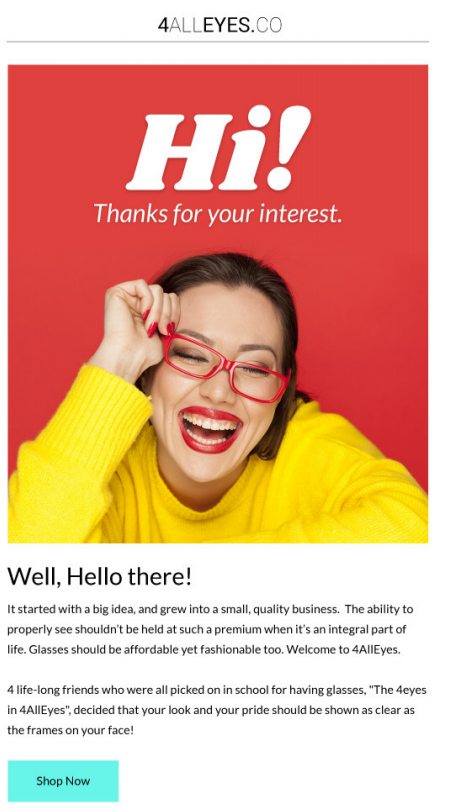
Once you have this email set up, you’re ready for the second email in your welcome series: The invitation to connect.
2. Invitation to connect
New contacts may not be familiar with the way your business operates and the ways they can connect with you if they need help. Use your second welcome series email to get them the information they need about your social channels, a topic that most customers want to know about, or how they can contact you if they have questions.
When should you send your invitation to connect email?
Send this email about two days after they’ve received the first welcome email.
What should you say in your invitation to connect email?
This email should include two main things:
- How subscribers can further connect with you (most likely on your social media channels)
- Why they should further connect with you. Tell them what they get out of following you on social media — will they receive product updates? Discounts? Information about events? Make it worth their while.
Try one of the following:
Most new contacts want to know about [topic], so we’re making it easy to get the information you need.
Visit [page] on our website
We’d love to hear from you! Give us a [call/email] so we can [benefit to calling. For example, answer your specific questions, provide a free consultation, or something else you offer].
Get in touch with us at [phone number and/or contact email].

Once you’ve set up your invitation to connect, you’re ready for the third and final email in your welcome series.
3. Get to know your contacts
The more you know about your email contacts, the easier it is for you to inspire action by sending them relevant information and offers.
Use this final optional email in your welcome series to get to know a bit about your new email contacts so you can get better at sending the content they’re most interested in.
When should you send your “get to know your contacts” email?
Send this email about four days after your “invitation to connect” email.
What should you include in your “get to know your contacts” email?
This email is all about getting to know your customers better, so think about what information would be helpful to know and then ask them for it. This email should include things like:
- A warm ask for more of their information, along with how you plan to use it. Be transparent — will you use it to make their email more relevant? To send a special offer on their birthday? Give them an idea of your plans for how you’ll use the information they provide.
- A survey to actually collect that information
Use these example scripts to build your “get to know your contacts” email:
We’d love to learn a little more about you so we can deliver you a special gift on your birthday.
When is your birthday? [Link to single-question survey]
We’d love to learn a little more about you so we can tailor the emails we send to your specific interests.
We’d love to learn a little more about you so we can give credit where credit is due.
How did you hear about us? [single questions survey]
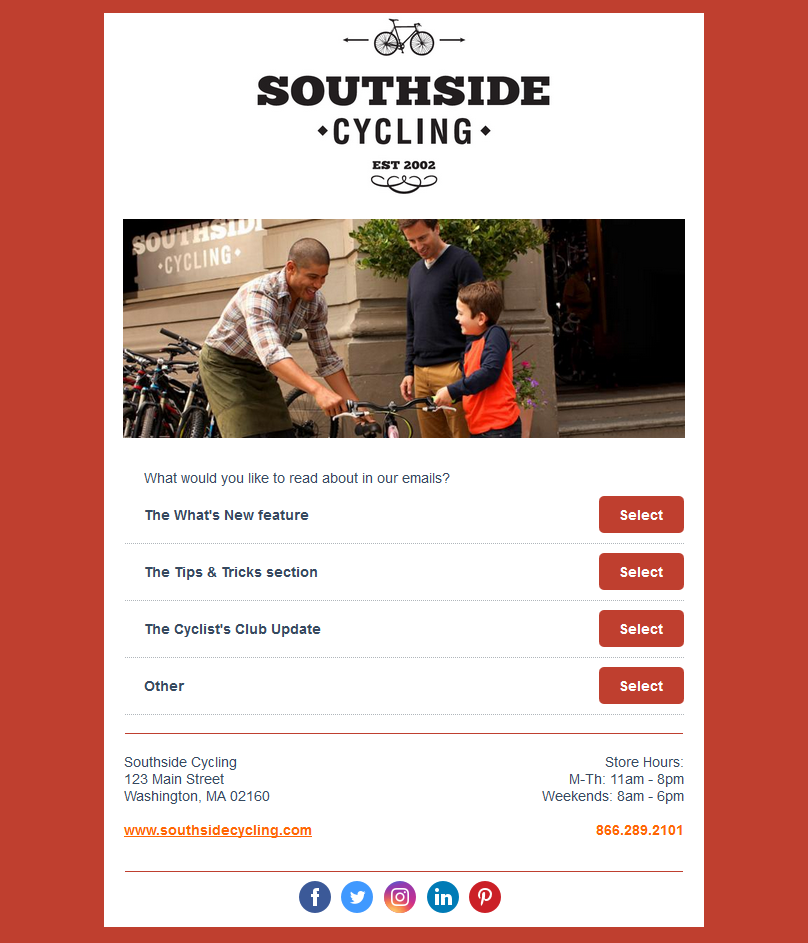
Next, make sure you actually use that valuable data to make future emails more relevant with email segmentation or personalization.
Don’t be afraid to modify these welcome series scripts to match the tone and personality of your business.
The key is to focus on your new contact and provide them value with each message.
Use the scripts above as a guide. Pretend you’re speaking to your new contact face to face. How would you say it? That’ll help your email feel personal and less like a script.
Welcome series email examples by industry
Now let’s take a look at what a finished welcome series looks like in action, with these automated welcome email examples sorted by type of business or organization. You’ll find an example of the first welcome email and the invitation to connect.
Retail welcome email series examples
Nonprofit welcome email series examples
Real estate welcome email series examples
An automated welcome series that feels personal is what you want.
By setting up and including these three automated emails in your welcome series, you can take advantage of the early stages of this relationship to capture more engagement and sales.
Don’t let this highly-engaged state of your new contacts slip away from you. Set up your series to trigger whenever someone joins your list.

